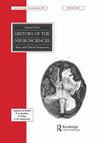Phrenology’s frontal sinus problem: An insurmountable obstruction?
IF 0.3
3区 哲学
Q3 HISTORY & PHILOSOPHY OF SCIENCE
引用次数: 0
Abstract
ABSTRACT Whereas some of Gall’s critics were quick to assail his organology as materialistic and fatalistic, others questioned his methods and scientific assumptions, especially his craniological tenets. The idea that the skull does not faithfully reflect the features of small, underlying brain areas was repeatedly brought up in the scientific debates. Critics pointed to the frontal sinuses above the eye orbits as evidence for the interior and exterior plates of the cranium not being in parallel—hence, for several or many phrenological organs being unknowable. This article traces the origins of the frontal sinus arguments and how Gall, Spurzheim, and later phrenologists responded to it. It reveals how the two sides fought and remained divided about the significance of the sinuses throughout the nineteenth century—that is, on whether the frontal sinus “problem” was an insurmountable obstacle or one that was merely an inconvenience.颅相学额窦问题:不可逾越的障碍?
尽管高尔的一些批评者很快抨击他的器官学是唯物主义和宿命论,但其他人质疑他的方法和科学假设,特别是他的颅骨学原则。头骨不能忠实地反映小的、潜在的大脑区域的特征,这一观点在科学辩论中被反复提出。批评者指出,眼窝上方的额窦是头盖骨内外板不平行的证据——因此,有几个或许多颅相学器官是不可知的。这篇文章追溯了额窦争论的起源,以及Gall、Spurzheim和后来的颅相学家是如何回应的。它揭示了在整个19世纪,关于鼻窦的重要性,双方是如何斗争和保持分歧的——也就是说,关于额窦的“问题”是一个不可逾越的障碍还是一个仅仅是不方便的问题。
本文章由计算机程序翻译,如有差异,请以英文原文为准。
求助全文
约1分钟内获得全文
求助全文
来源期刊

Journal of the History of the Neurosciences
社会科学-科学史与科学哲学
CiteScore
1.00
自引率
20.00%
发文量
55
审稿时长
>12 weeks
期刊介绍:
The Journal of the History of the Neurosciences is the leading communication platform dealing with the historical roots of the basic and applied neurosciences. Its domains cover historical perspectives and developments, including biographical studies, disorders, institutions, documents, and instrumentation in neurology, neurosurgery, neuropsychiatry, neuroanatomy, neurophysiology, neurochemistry, neuropsychology, and the behavioral neurosciences. The history of ideas, changes in society and medicine, and the connections with other disciplines (e.g., the arts, philosophy, psychology) are welcome. In addition to original, full-length papers, the journal welcomes informative short communications, letters to the editors, book reviews, and contributions to its NeuroWords and Neurognostics columns. All manuscripts are subject to initial appraisal by an Editor, and, if found suitable for further consideration, full- and short-length papers are subject to peer review (double blind, if requested) by at least 2 anonymous referees.
 求助内容:
求助内容: 应助结果提醒方式:
应助结果提醒方式:


